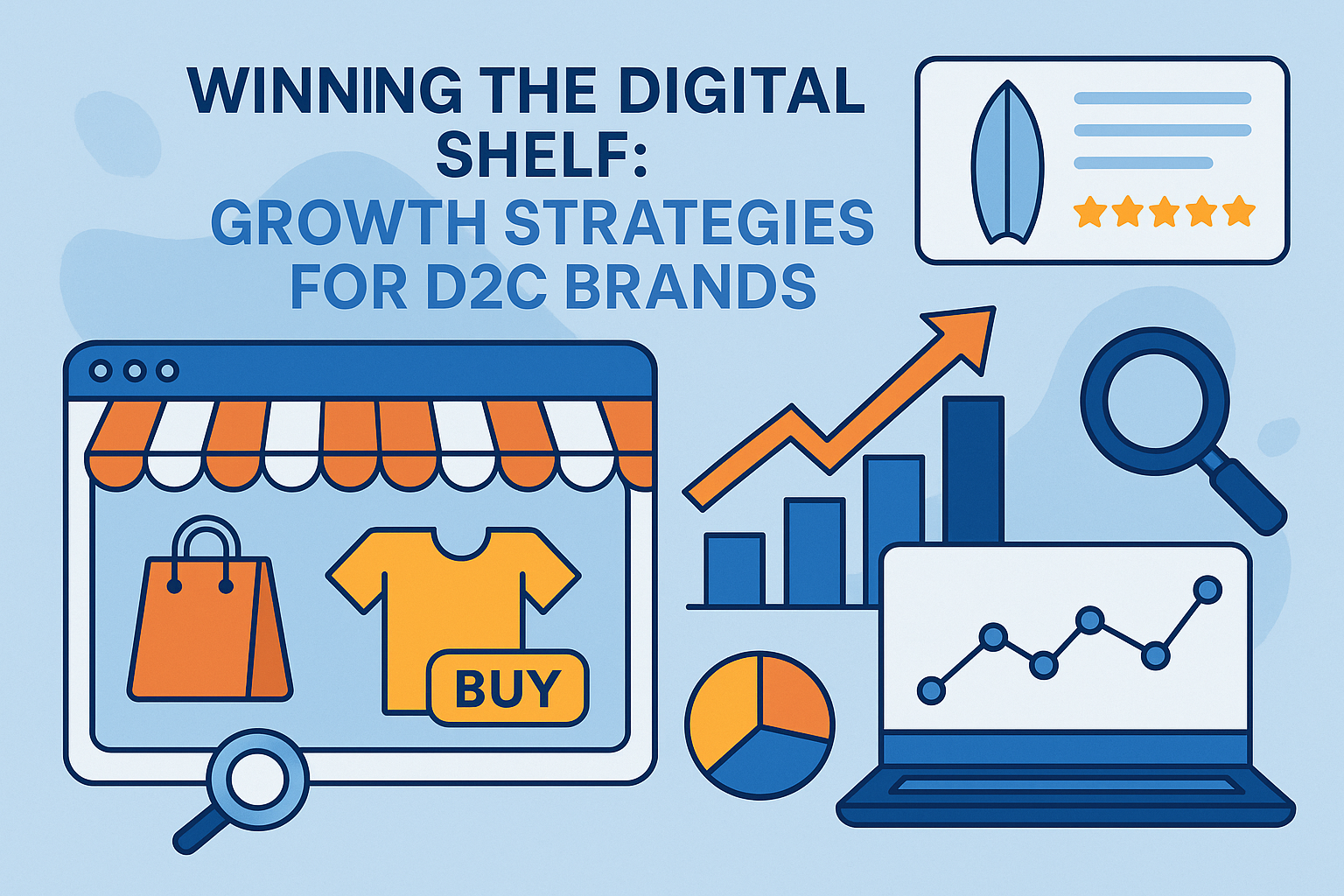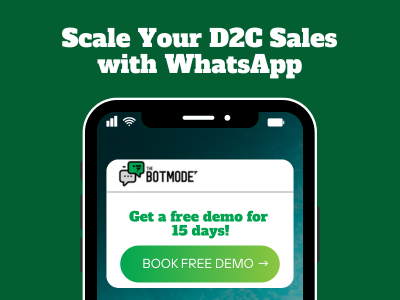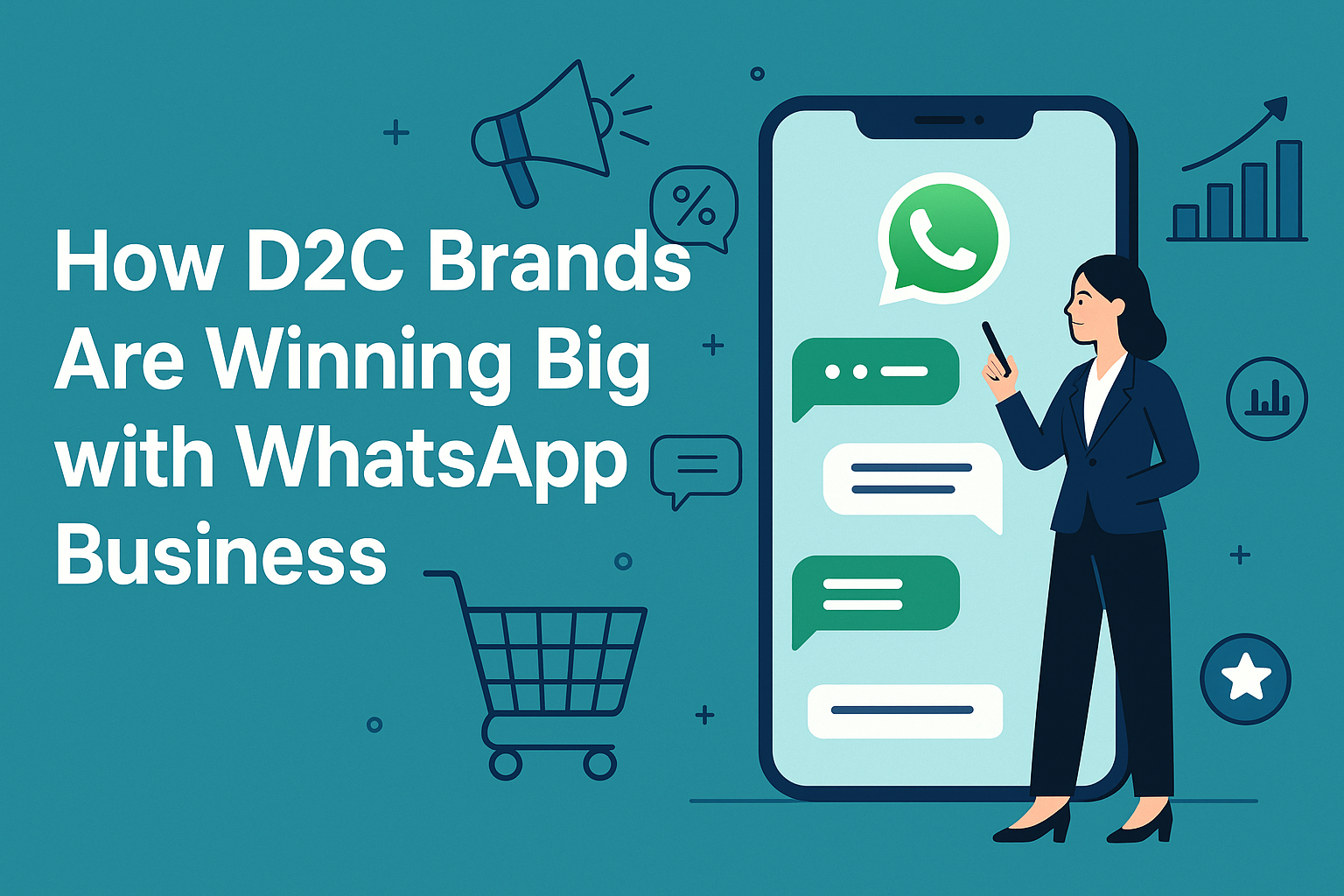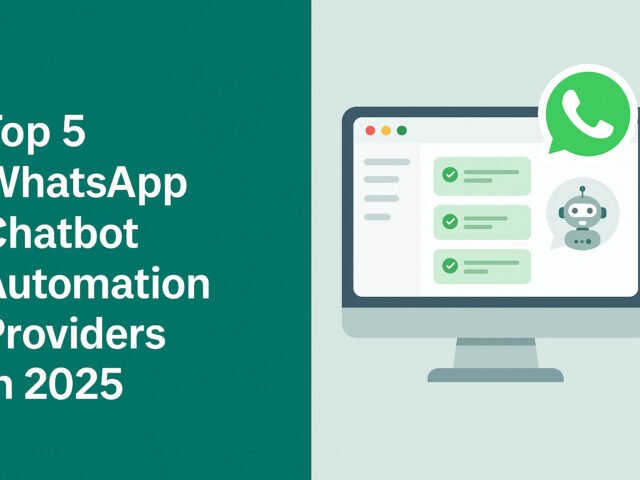In the crowded online landscape, your D2C (direct-to-consumer) brand must do more than just exist — it needs to own the shelf wherever your customers shop and browse. Winning the digital shelf means delivering at every touchpoint: your website, social channels, marketplaces, mobile apps, and even offline activations. Here’s how forward-thinking D2C brands can elevate their game in 2025 and beyond.
1. Build Product Pages That Convert
Your product page is often the final mile before conversion. Nail it, and you increase revenue. Mess it up, and a customer leaves.
High-quality visuals and video
- Use crisp, zoomable images from multiple angles (studio, flat-lay, lifestyle).
- Include product videos, 360° views, or mini demos to boost confidence.
- Use user-generated content (UGC) for authenticity — real photos from customers help reduce hesitation.
Clear, benefit-first copy
- Lead with what the product does for the user (not just specs).
- Use structured formatting: bullets, FAQs, “What to compare with,” and objection-handling sections.
- Answer lingering questions before they arise.
Social proof & validation
- Display verified reviews, star ratings, and highlight top reviews.
- Feature photos and videos from real customers.
- Use “Best for,” “Top use cases,” or “Compare products” modules to let users self-navigate.
Technical performance & on‑page foundations
- Fast page load speed (especially on mobile).
- Responsive, clean design.
- Correct metadata (title, description), alt texts, schema markup.
- Real-time inventory sync so customers don’t see “Out of stock” after adding to cart.
2. Strategically Expand Across Channels
You don’t have to be everywhere — be effective where your audience lives.
Marketplaces for reach, not margin
- Use marketplaces (Amazon, Flipkart, etc.) to acquire new users, but retain direct channels for higher margins.
- Maintain consistency in branding, product info, and pricing across channels.
- Sync inventory carefully to avoid stockouts or overselling.
Social & live commerce
- Sell via Instagram Shops, TikTok Shop, or Facebook Shops.
- Host live shopping events or product launches with limited editions.
- Leverage “checkout within the app” capabilities to reduce friction.
Offline and experiential touchpoints
- Try pop-ups, kiosks, or brand experience centers to let people touch, try, and feel your product.
- Use offline events to drive online follow-ups (QR codes, in-store app prompts).
- Some D2C brands in India are already doubling down on offline presence for brand trust and discovery.
3. Personalization & Smart Customer Journeys
Your customers crave unique experiences. Generic no longer works.
Hyper‑personalization
- Use behavioral, demographic, and purchase history to tailor product suggestions, banners, and offers.
- Show dynamic bundles or cross-sells based on what users view.
- According to trends for D2C in 2025, brands with advanced personalization will outperform peers.
- Segmented flows & lifecycle journeys
- Welcome sequences, onboarding guides, browse- & cart-abandonment flows tailored by segment.
- Post-purchase flows: product tips, replenishment reminders, “you might like” emails.
- Retention tactics: win-back campaigns, VIP previews, re-engagement incentives.
Loyalty, subscriptions & referral programs
- Offer subscriptions (if your product category permits), which lock-in repeat business.
- Tiered loyalty programs with perks (exclusive launches, early access, discounts).
- Referral incentives—“Give ₹X, Get ₹Y”—help your customers become growth engines.
4. Data, Analytics & Optimization
Data should drive your decisions — not gut feel.
Digital shelf health & visibility tracking
- Use tools to monitor how your products appear across channels: ranking, content completeness, stock, reviews.
- Benchmark against competitors to spot gaps or opportunities.
Pricing & inventory intelligence
- Implement dynamic or competitive pricing where sensible.
- Avoid stockouts — they not only lose sales but may hurt ranking.
- Ensure real-time sync between your tech stack, warehouse, and sales.
Experimentation & lift measurement
- A/B test product page elements (CTA buttons, images, layouts).
- Use incrementality testing to distinguish between true lift and cannibalization.
- Monitor KPIs like average order value (AOV), conversion rate, customer lifetime value (CLTV).
5. Fuel Growth with Marketing & Acquisition
No matter how perfect your shelf is, you still need traffic and reach.
High-intent paid channels
- Use search ads, shopping campaigns, and retargeting as primary acquisition levers.
- Expand into programmatic, native ads, or display remarketing for upper-funnel awareness.
Content & brand storytelling
- Invest in blogs, guides, tutorials, and comparison content that pull people in.
- Position your brand as an authority in your niche to drive organic referral traffic.
Influencers, partnerships & community-driven traction
- Work with micro- and macro-influencers aligned with your target audience.
- Collaborate for co-branded products or limited drops.
- Build a community — brand ambassadors, forums, user groups to generate word-of-mouth.
Email & SMS sequencing
- Use segmentation and behavioral triggers for cart recovery, browse abandonment, cross-sell, upsell.
- Run win-back campaigns, special previews, limited offers.
- Ensure compliance (opt-ins, frequency caps) to maintain trust.
6. Brand Trust & Signals
You must earn trust at every step.
- Clear, transparent shipping, return, and warranty policies.
- Include trust badges, secure checkout icons, SSL, data privacy assurances.
- Showcase social responsibility, sustainability, or ethical credentials (if relevant).
- Provide proactive, responsive customer support (chat, email, calls, post-sale follow-up).
Conclusion
“Winning the digital shelf” isn’t a one-time task — it’s an ongoing process. It means optimizing your product experience, channel strategy, personalization, marketing, and operations — all in lockstep with real-time data and customer feedback.
As a D2C brand, your greatest advantage is direct access to your customer — use it wisely. Audit your presence today (including content from TheBotMode for digital growth), uncover your biggest gaps, and start iterating deliberately.
FAQs
Q: What is the digital shelf?
A: It’s where your products appear online—your site, marketplaces, and social media.
Q: How many marketplaces should I be on?
A: Start with 1–2 that align with your audience; expand gradually.
Q: Is personalization really effective?
A: Yes—personalized experiences increase sales and retention.
Q: What metrics matter most?
A: Focus on AOV, CLTV, conversion rate, and product visibility.
Q: How can I avoid pricing conflicts across channels?
A: Use dynamic pricing, channel rules, and monitor for overlap.

















